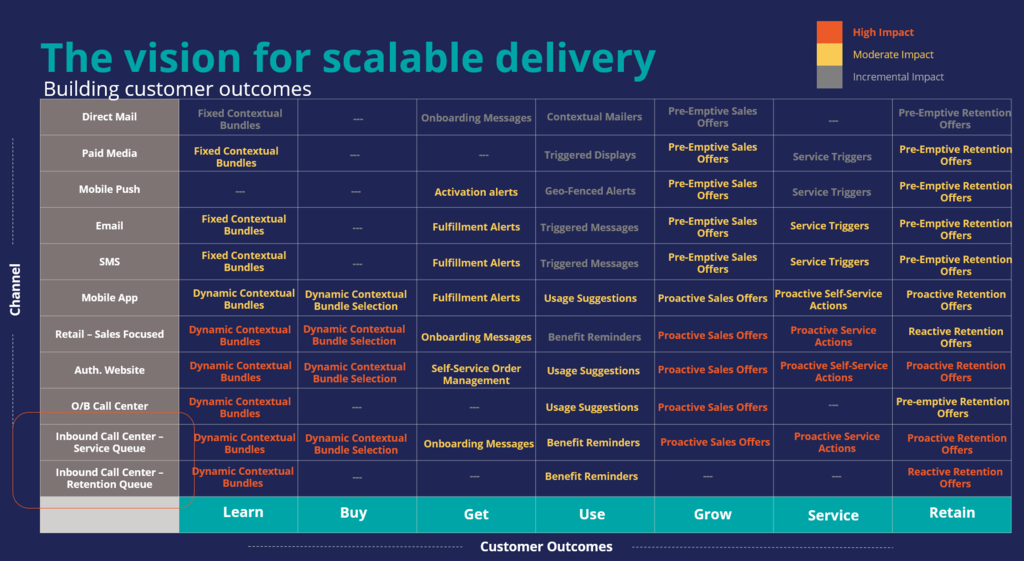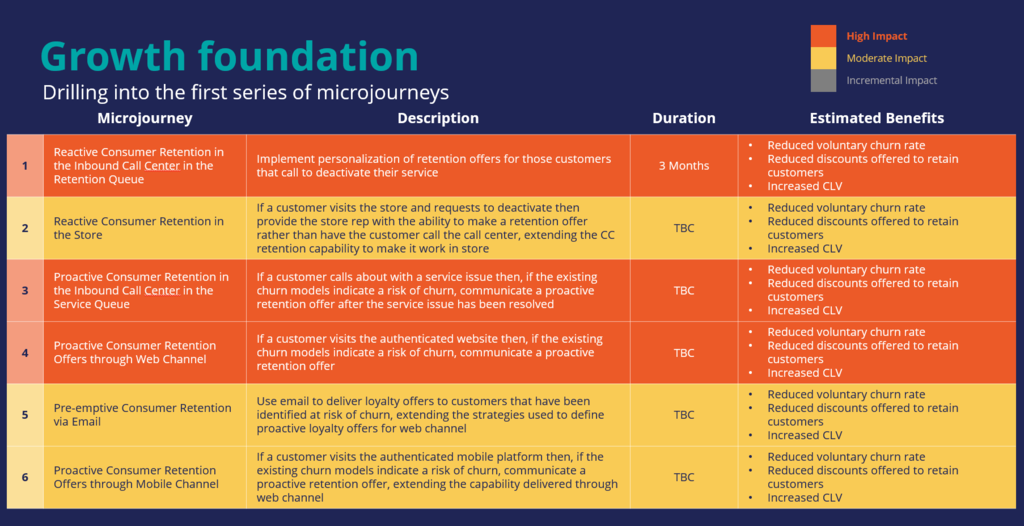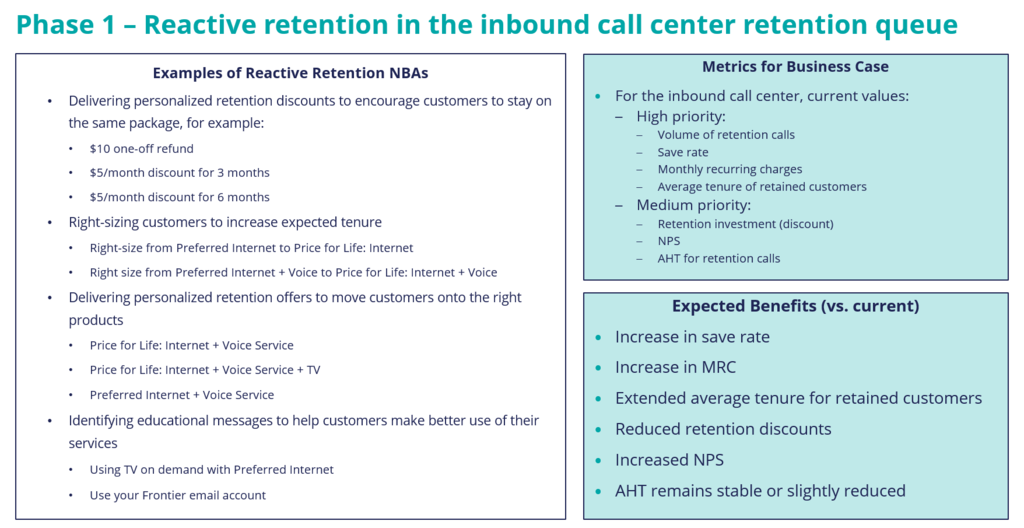
The Microjourney Workshop
Purpose
The purpose of the Microjourney Workshop is to:
- Provide an overview of the complete one-to-one vision and roll out phasing by using the Microjourney Matrix
- Stimulate discussion on what the total set of use cases are for the overall vision
- Stimulate discussion on business priorities to get to the end-state vision
- Stimulate discussion on approximate business value for each use case
Target audience
During the Microjourney Workshop, the vision for the customer is identified.
This Microjourney Workshop occurs as part of solution development.
At this stage, you have had initial meetings with the prospect, performed a “mystery shopper” activity, and sparked the interest in diving deeper into the subject together with the relevant stakeholders on the client side.
The target audience for the workshop is:
- The Sponsor or Fox (such as Head of Marketing, CMO, VP Marketing, or Director Base Marketing)
- Line of Business Marketers
There are two coverages scenarios for performing the workshop:
- If there is a dedicated one-to-one account executive (AE) on the account, that AE is accountable for the workshop.
- If there is no dedicated one-to-one AE on the account, the prime AE is accountable for the workshop.
In both cases, the one-to-one Solutions Consultant on the account is responsible for the execution and follow up of the workshop.
The following roles may support the workshop:
- Solution Consultants
- Sales Specialists or 1:1 Ambassadors
- Business Consultants
- The Business Excellence Team
Agenda and output
The expected output has:
- An agreed end-to-end, one-to-one customer engagement vision
- A Microjourney Matrix made specific to the customer’s situation
- A provisional prioritization of use cases (A list of prioritized microjourneys)
- An overview of the first phase in the phase template
- A high-level business case estimate
- Buy-in from the sponsor
- An agreement to progress to either offer for phase 1 (preferred) or Opportunity Assessment to validate vision and phasing
Baseline agenda
The high-level agenda is executed in a one-to-two-hour workshop. Following that session:
- Outputs from the session are incorporated into a revised vision and roadmap
- The revised roadmap is presented back to the sponsor
To run a Microjourney Workshop, propose the following baseline agenda:
- Review the strawman matrix – 15 minutes
- Review the available channels
- Review the lifecycle phases/business intents
- Review the universe of use cases – 30 minutes
- Review the boxes in the matrix
- Confirm, modify, or delete the use cases in each box
- Understand high-level business priorities – 15 minutes
- Define which channels are the highest priority
- Determine which business intents are most important
- Build first pass of prioritization – 30 minutes
- Using a combination of channel and intent priority, estimates of value, and evaluation of re-use, determine the prioritization of microjourneys
- Create a high-level definition of the business case for use cases – 30 minutes
- For the top five microjourneys define the KPIs that determines the business case
- Document how improvements to those KPIs drive business benefit
- Next steps.
Workshop preparation
To prepare for a Microjourney Workshop:
- Review the industry-specific Microjourney Matrix.
- Pega has pre-built matrices per industry
- Customize the language and examples for the client.
- Validate the list of channels and names. Minor modifications are allowed; for example, splitting inbound call centers into retention and service queues, or you might replace mobile app with the name of the client’s mobile app. Validate the list of business or customer outcomes. Try and keep the list but modify the names if the client has different terminology. Review the boxes in the matrix. Make sure that you understand each use case. Review/modify examples of the next best actions for all the important microjourneys. If possible, pull in specific examples from that client. Try finding some examples of next-best-action from their website. Review the most critical metric KPIs/metrics that prove success
- Set up the workshop.
- The workshop is typically performed in one to two hours. Outputs from the session are incorporated into a revised vision and roadmap. Then, the revised roadmap is presented back to the sponsor.
Example
The following diagram is an example of the Microjourney Matrix that Pega put together for a specific client, a U.S. Broadband and Fixed Voice provider. This matrix is similar to the standard communications Microjourney Matrix. But for this client, their inbound (I/B) call center is split into two distinct queues: the retention queue and the service queue. That distinction is added into the channels on the left.
Try not to make massive changes, but ensure that the matrix is as meaningful as possible for the client.
The following table is the roadmap. The roadmap is typically the primary output from the session and usually takes the final 30–60 minutes.
Take the prioritized microjourneys from the matrix and put them into the first column, ensuring that you have a complete description that covers the use case and the channel with a name that is meaningful for the client.
Then, provide a longer description by using the client’s words to describe exactly what that microjourney means to them. Fill in the table for the first few microjourneys (usually the first 4-6 cells). More than 6 microjourneys is unnecessary as these may change once the client begins to use the solution.
Once you have the list of microjourneys, discuss the benefits that the client can expect from each of these microjourneys.
This initial discussion in this meeting might be qualitative; you agree on the types of benefits that the clients see rather than the magnitude or the values for each benefit. The slides with the detail for each microjourney are helpful here, providing guidance on what benefits the client can expect and the KPIs they use to track the benefits.
The following image is an example of a one-page phase description for a specific U.S. Broadband and Fixed Voice provider. In this example, the provider’s website is analyzed for specific examples of propositions that can serve as reactive retention offers. The point here is not to perform a detailed analysis of everything that the client offers but to do enough research to use examples from the client’s business to make the use cases seem more real.
After the workshop, please make sure to address the following next steps:
- Provide KPIs defined in the workshop. Ask the client organization to provide as much detail as possible on the KPIs required for business cases for prioritized microjourneys.
- Calculate quantitative business cases. The Pega team calculates high-level quantitative business cases for each of the prioritized microjourneys.
- Lastly, present the refined business cases back to the stakeholders. Make sure to present these back no later than two weeks after the Microjourney Workshop.
This Topic is available in the following Module:
If you are having problems with your training, please review the Pega Academy Support FAQs.
Want to help us improve this content?


